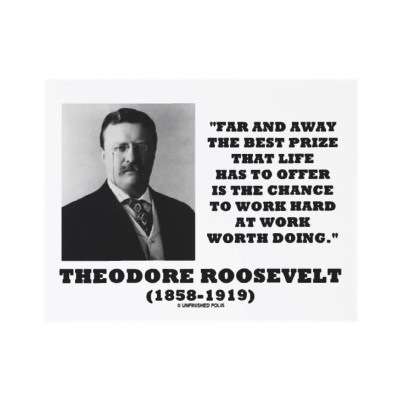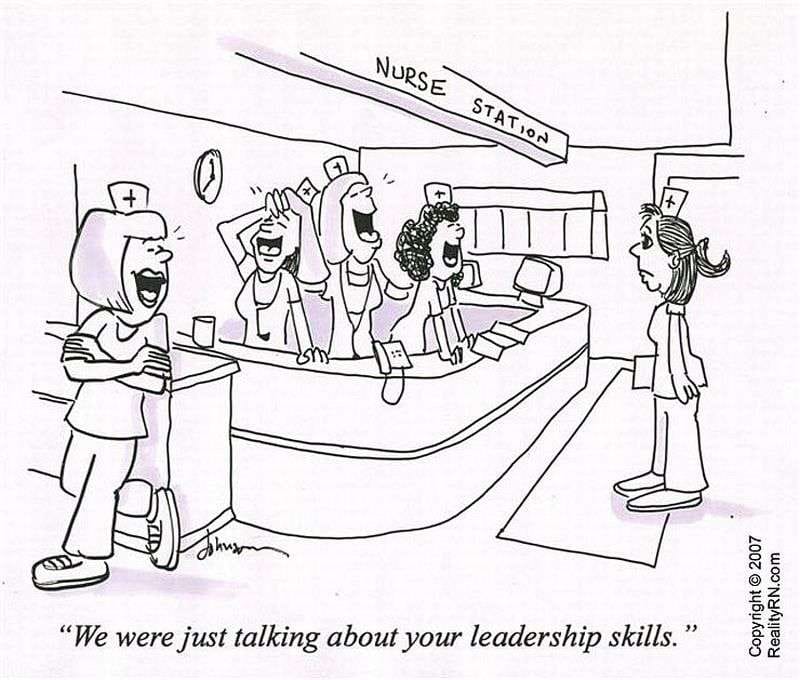
by Adam L Stanley | Jun 8, 2012 | Leadership, Teamwork

Top Traits: Defining the perfect employees
I had a whole home audio system installed in my Chicago home a few years ago. I spent more than I have ever spent on audio equipment and hired a team of twenty somethings to install it for me. I remember when they came for the install and opened all the boxes. You honestly would have thought they were installing for themselves. They were so excited about the install, and kept telling me how I really got the coolest equipment out there. Their excitement was contagious. I truly felt like I was “the man” and could not wait until my first party. When done with the install, they beamed with pride and showed me the system, how to use it and some of the fun stuff. They also discussed potential upgrades coming down the road and ways I might consider expanding.
Trait # 2: Pride in Work Product
How often do employees show this kind of pride in the work they do? When you shop at a mall, or work with your local telephone company, do you get the sense that the people working with you are actually proud of the services they are providing? I’m doubting it! Definitely not the case with BT given my recent experiences with them, but I digress …. Shouldn’t you be proud of what you do? Pleased with your work and the value you bring? Nurses comfort people. Teachers change lives and prepare our futures. Your particular job may not be as obviously impactful but you’re driving value by helping clients either directly or indirectly. And if you have chosen to work at a particular place, you should have pride in what you do. My maternal grandfather was a garbage truck operator for almost 30 years. My paternal grandfather worked at the US Post Office for 25 years after serving his first five adult years in the army. Neither of them ever made very much money. But each had a pride in their work that was inspirational.
What I like
 I want employees to show a sense of pride in what they do. In what they create. The best recent example of a leader that exuded pride in the products he offered was Steve Jobs. You just knew he thought that every product he allowed out the door was AWESOME! In my current role, I have a principle that I call “pretty red bow” that is based on pride of product and service. In short, I demand that my teams think about the entire package when building a new service. Not just the technology, which may be cool as ever, but the service, the support, the way it is sold and the training provided for users. You can build the very best mousetrap but if everyone thinks it is an appetiser with crackers and cheese …. Well, you get the picture. I want them to build a service, package it well and tie it up with a pretty red bow. Get it?
I want employees to show a sense of pride in what they do. In what they create. The best recent example of a leader that exuded pride in the products he offered was Steve Jobs. You just knew he thought that every product he allowed out the door was AWESOME! In my current role, I have a principle that I call “pretty red bow” that is based on pride of product and service. In short, I demand that my teams think about the entire package when building a new service. Not just the technology, which may be cool as ever, but the service, the support, the way it is sold and the training provided for users. You can build the very best mousetrap but if everyone thinks it is an appetiser with crackers and cheese …. Well, you get the picture. I want them to build a service, package it well and tie it up with a pretty red bow. Get it?
My favorite employees are the ones that call or email me to tell me when a client is really pleased, or even better, when no client has said anything but they know the service they have built will excite clients. The emails that show progress on solving a complex problem, the random drop by to my office to show me a prototype of a new collaboration tool, or the demo of a new “awesome” iOS application, this is what excites me.
If you do not feel pride in the work you do, why would your boss, your team, or your client?! If you don’t feel you can be proud of your work, perhaps you aren’t in the right field. Or perhaps you are simply not working hard enough to deliver something with which you can be proud.
What I need to do as a manager to enable
Provide. Praise. Promote.
- PROVIDE. If you hire an employee and ask them to build a Bentley, then only give them a thousand bucks, a Bentley you will not get. Set guidelines that are achievable and provide your teams with the resources needed to be successful. The greatest morale killer in most technology shops today is the constant badgering on costs. We must provide opportunities for employees to shine. A great example of this within Aviva is our mobile apps competition. We’re encouraging people around the world to create prototypes of great new app concepts in friendly competition. We encourage all of the contributors and it is FANTASTIC seeing the pride of ownership among the teams that is evident in their submissions.
- PRAISE. Give credit. Give credit. Give credit. Employees, especially those in service industries, operations functions, and technology, get PLENTY of complaints and abuse. When someone creates something amazing, you MUST acknowledge it. I have seen so many managers take credit for their team members work without adequately praising them. It is shameful. As I said with respect to all hard working and talented employees (prior blog), ensure those who show pride in their work and deliver excellence get the recognition they deserve.
- PROMOTE. This should be easy for those of you with children as well as for those who remember when you were a child. Think about how proud a kid is when their artwork is displayed on the refrigerator or on the school bulletin board. Create THAT environment. Showcase the amazing products and services your teams have created. If they have pride, and it is deserved, their leaders should also be proud. And showcasing their products will encourage others to create great things as well. Be a “proud mama” or “proud papa”. You will encourage more people to take pride in their work. And when you take pride in your work, you do better work. Simple, right?
I’m proud of the folks working with me now and proud of the things we accomplished while I was in my prior roles. I will continue to seek out, provide for, praise and promote those around me who take pride in what they do. It takes all kinds to make a great team but the perfect employees demonstrate pride in work product. And I want the perfect employees along on the journey with me.
Let me know what you think. What do you view as top employee traits? How do you build the best teams around different types of team members? Are you working hard on something worth doing?
Be sure to view all of the Top Traits:
Trait 1: Hard working AND talented
Trait 2: Pride in work product
Trait 3: Fun to work with
Be Well. Lead On.
Adam

Adam Stanley
Adam L. Stanley Connections Blog
Technology. Leadership. Food. Life.
AdamLStanley.com
Follow me on Twitter | Connect with me on Linked In
by Adam L Stanley | May 18, 2012 | Leadership, Teamwork

Top Traits: Defining the perfect employees
Yikes – It has been a while since I blogged and I have an excuse. We are working on some amazing things at Aviva and as part of that I have spent the past few weeks in meetings. Yes, being in meetings can sometimes be a royal P.I.T.A., especially if they are pointless. HOWEVER, I have been in FANTASTIC meetings. About dreaming, creatively thinking of new ways of engaging with clients, driving change, building new systems and tools, and SHARING. So, its been tiring but GOOD. Enough with the CAPITALIZ(S)ATION, right? Smile.
So, while I’ve been “away” from the blogosphere, I’ve been observing teams, learning about my new teams here and observing vendors, consultants, baristas at my favorite coffee spots, bartenders and servers at nice restaurants, my dry cleaner, the folks that work for London Transport, and the owner of the flat I lease. And, as I observe, I’ve noted things I like about these various employees and team members. As importantly, I’m refocusing on what I as a leader can do to enable the behaviours I like and discourage other behaviors. In my next series of blog posts, I will share my OPINIONS. I am NOT speaking for any company, nor am I speaking for Cafe Nero, Fino, etc. Just me.
… Trait # 1 – Hard working AND talented
Maybe you’ve had this guy on your team: The fact is he is simply brilliant. He knows so much about every relevant topic and can think beyond any analyst you have ever hired. Give him any problem to solve and, with focus, he can solve the most complex of them within minutes. Yet, when you compare his output and the value created from his efforts to the rest of your team, he falls short. Why? Because he is LAZY. In some ways, there is nothing worse than a LAZY smart person. Like a perfectly grilled prime rib being placed in front of a vegan, a USELESS waste. Offensive even!
Or perhaps you’ve seen more of this guy: Every night as you leave the office you say goodnight to this guy. He is in every meeting, takes copious notes, has severe frown lines from constantly working, thinking and pushing himself. He rarely takes vacations and always goes that extra mile. And yet, again, output is severely lacking. Deadlines are missed and errors are made. This person, while in my humble opinion much more acceptable than the lazy genius, still falls short. These guys are great to have on the team and can be highly valuable. They have the passion but not all of the skills… Which brings me to my first trait of the perfect employee…
Hard Working AND Talented
What I like
People who work hard and think hard are the foundation of a good team. And it is these people with whom I most like working. I don’t need geniuses actually, though the occasional rocket scientist does bring a uniquely different perspective to the team. I need people who are clear about what they know, comfortable researching or asking elsewhere about things of which they know little, and passionate about continuing to improve their knowledge base. But I also need them to want to work hard, push themselves, and execute. Brilliant strategy without effective delivery is … well, what many consultants produce. (And before I get the hate mail, I can say that because I am a former consultant. And of course not all consultants produce paperweights….)
I’m looking for people who have a strong base of talent on which to build, and the industriousness to see their base as a foundation and not a ceiling. Vision to dream about going further, learning more, and gaining even more knowledge as they execute and deliver. I had an architect at a prior company (confession: I hired/poached him from a consulting firm) that was not only the most knowledgeable person about Notes to Exchange migrations, he was also truly hard working. And he was humble; which I will discuss in a future blog. I could get more out of this one person than five others more polished, more educated, and higher paid. But he had a passion for solving problems and thinking harder about ways of working. And he never stopped learning.
I need people who think and push. Who work hard and study hard. Who bring a unique skillset to the table, share it with others, and in so doing make the entire team better.
What I need to do as a manager to enable
EMPLOY. ENGAGE. EMPOWER.
- EMPLOY. I need to find these people and bring them in to my teams. Typical HR processes seem to focus on assessing skills or fit. I need to assess ability to work hard, continue to learn and dream big. My goal will always be to find people smarter than I am, that work as hard or harder than I do, and give them the opportunity to shine.
- ENGAGE. I must actively seek to connect with these high performing high value generating team members, making clear how much they are valued. Too often, the smartest guy that does little work but knows when to speak up is rewarded first. As a leader, I must continuously look to find the hard working and talented and ensure they get the recognition they deserve.
- EMPOWER. The worst thing a manager can do with any top talent is to relegate them to worker bee status when they should be empowered to make decisions. These are your leaders and should be allowed to lead. These folks should be encouraged to ask forgiveness rather than permission.
For those interested, I found another blogger that commented on this topic and grouped people into four blocks instead of three. Where I cover smart and lazy, smart and hard working, and not so smart but hard working, this person also addresses stupid and lazy. I of course ignored that group because I would not even consider keeping someone in that bucket on my team. As Donald Trump says, “you’re fired!” Here is the other blog.
I also found a humorous take on choosing one or the other when you only have smart/lazy or dumb/hard working as your options.
From a “real world” perspective, it is FAR better to be smart and lazy than dumb and hardworking. You see, if a dumb person does a lot of work, chances are they’re going to do a lot of it wrong since they don’t know what they’re doing. Then the smart people are the ones who have to fix everything; and they spend all their time cleaning things up instead of being productive with their smartness.
I guess that is certainly one way of looking at things. As for me, I will continue to seek out the perfect ones, while also recognizing it takes all kinds to make a great team. Most importantly, I will continue to strive to find balance in life and work toward doing the right thing. I like what Teddy says on this topic.

Let me know what you think. What do you view as top employee traits? How do you build the best teams around different types of team members? Are you working hard on something worth doing?
Be sure to view all of the Top Traits:
Trait 1: Hard working AND talented
Trait 2: Pride in work product
Trait 3: Fun to work with
Be well. Lead On.
Adam

Adam L. Stanley Connections Blog
Technology. Leadership. Food. Life.
AdamLStanley.com
Follow me on Twitter | Connect with me on Linked In | “Like” me on Facebook
by Adam L Stanley | Oct 4, 2011 | Leadership, Quotes and Inspiration, Relationships
 Lessons from The Help
Lessons from The Help
I never really liked going to movies as a teenager and most of my adult life was the same. Then, two things happened: 1) Showplace ICON opened a VIP theater near my home in Chicago, offering the opportunity to see movies in a recliner with drinks and gourmet sliders (and popcorn with bacon!); and 2) I started watching the Harry Potter movies to connect with my nieces and nephews. It was the second one that kind of leads me to this blog. You see, while I started off watching for the “action†of the young wizard, I quickly realized how many leadership lessons can be found in movies. Like rap music for inner city children in some schools, perhaps we can use movies to bridge between popular culture and leadership lessons for Gen Y.
I can blog thousands of words from Harry Potter, which is in my opinion as rich as the Godfather movies with leadership lessons. However, today I will discuss “The Helpâ€, a movie about three very different women and the relationships between them and other people in their Jackson, Mississippi town. I have watched the movie and read the book so may interchange them a bit. The movie was a very good adaptation, in my humble opinion.
Here are some simple lessons found from the book which spawned the movie:
1) Communication is more than just talking
“I don’t know what to say to her. All I know is, I ain’t saying it. And I know she ain’t saying what she want a say either and it’s a strange thing happening here cause nobody saying nothing and we still managing to have us a conversation.”
How many times have you been in a meeting that lasted an hour and accomplished absolutely nothing? Sometimes it seems that everyone has something to say and yet nothing is said. I firmly believe that people need to listen more and talk less. Think about what goals have been set for the meeting and how each participant can add value.
A mentor of mine once told me that anyone who came to a meeting and said nothing should not have been at the meeting. However, some people are SO VOCAL that others may want to contribute but do not. Try not to be THAT person. Listen, learn, and watch for non-verbal and verbal cues.
2) Carrots work better than sticks. And they are a lot cheaper.
“…and that’s when I get to wondering, what would happen if I told her she something good, ever day?”
For many of your team members, you may be the only positive encouragement they have all day. I have had the pleasure of managing help desk technicians as part of my organization for several years. Many of them are the brightest, hardest working, and dedicated employees I have led. But talk about a thankless job. When things are good, no one calls the help desk. So they only get the irate, the frustrated, and often, the …. well, clueless.
Greet your team members, both peers and subordinates, by name and with a smile. Tell them something positive about their work, their attitude, or anything else you can find that is truly positive. Don’t make things up, but challenge yourself to find the best in everyone with whom you interact. You will be amazed what it does for that person and in turn what that person will do for your team and your clients.
3) Change begins with a whisper
There are thousands of quotes out there on change. And everyone says the right thing. Change happens. Change is good. Change is the only constant. And so on…. But the fact is CHANGE IS A PAIN IN THE …. Well, it’s hard.
In the movie and book, Aibileen is known as a solid citizen in the black community, respected for her wisdom and her prayers. Skeeter, who wishes to get several of the maids to participate in her book project, works first with Aibileen, who starts to mention it to Minnie, who then spreads it to others. Soon, the whisper spreads and several women want to speak to Skeeter.
The best way to manage change I have found is to think of every change as both necessary and positive, but to spread the word through individual conversations as much as town halls and large announcements. It is incredibly powerful for you as a leader if the day a major change is announced, you have dozens of people out there who have already been talking about it. Start small conversations with key influencers amongst your team and get them to discuss the change with others. Don’t do this for politics or scheme, you’re not just pandering to junior colleagues. Engage them because your team knows what works and can help make the change more effective. Let your key employee leaders be the whisper that starts a successful change event.
4) Some people will never change. Deal with it. Or Leave.
“It seems like at some point you’d run out of awful.”
I have been blessed to work primarily with great people. Even those that had their rough spots and mean streaks typically showed their good more than their bad sides. But there were two in particular that try as I might, I could not find within them a redeeming quality. They were mean, nasty and completely uninterested in team building and collaboration. One even went so far as to tell me I needed to be more of an [expletive] and that my team enjoyed working for me too much. The implication was that they could not possibly be working hard enough and still like me the way they did. I know, right? Crazy! And this was not in the 1980s.
My solution was to walk away. I knew it could be risky (using up some of my “marblesâ€, as a mentor of mine used to say) but worse still would be staying and working in a toxic environment that could make me toxic. I sacrificed the “glory” of working with this particular team and opted to find my success in other teams. To take the risk to be a respected AND liked leader and not just one that was feared.
If you have this kind of person in your team, try to address the issue head on. Do all you can to make it better, but at the end of the day, some people will never change. If you are the boss, you must fix the problem either by getting them to change or severing them from the team before they spread their negativity. If you are a member of the team and working for the “negative nestor”, you have the option to stay or go. If you can, get out of there before the negativity spreads to you.
5) Relate to and empower all employees.
One of the main characters in The Help convinced herself that building separate bathrooms for her maid was good for the maid as well as protecting her from “their diseases”. Most people watching this today feel this is so far from what anyone would do and thankfully they are correct. But how many times have you personally spoken to the most junior employee in your organization? Do you structure every meeting in layers where you meet with your directs and they meet with their directs and so on? Do your junior associates call you by your last name (Good morning, Mr. Stanley) sometimes and feel they have to ask permission to say hello when walking past your office? Watch for this and consider what you can do to create an environment where all of your team members truly feel equally engaged and empowered. And hang out with the senior and junior staff. A beer tastes the same with a CEO as it does with an analyst. Trust me.
Don’t give your employees the separate but equal treatment. Be a part of the team. As one of my favorite Aon teams used to say, “Hug it out!”
Wasn’t that the point of the book? For women to realize, we are just two people. Not that much separates us. Not nearly as much as I’d thought.
I pledge today to be a better listener and communicator, to empower my teams and treat them as equal partners, to encourage and uplift them, and to involve them in change so that their whispers can drive powerful success. Will you take this pledge? Do you have other lessons on leadership from this or other movies? I would love to hear from you. Post your comments below, on my Facebook page, or via Twitter.
Adam

Adam Stanley
Adam L. Stanley Connections Blog
Technology. Leadership. Food. Life.
AdamLStanley.com
Follow me on Twitter | Connect with me on Linked In | “Like†me on Facebook

by Adam L Stanley | Sep 16, 2011 | Leadership
Search the net and you will find thousands of articles, books, and blogs about leadership. And throughout the ages, men and women have written and spoken about leadership. So there is a treasure trove of quotes out there on leadership. I still feel the best way to learn to be a better leader is to be a leader and that successes, failures, and time are the best teachers of leadership. That said, I’ve done my searching and found my top 12 quotes on leadership. I wanted to share them with you.
Adam’s 12 Favorite Quotes on Leadership
12. “All of the great leaders have had one characteristic in common: it was the willingness to confront unequivocally the major anxiety of their people in their time. This, and not much else, is the essence of leadership.” John Kenneth Galbraith
11. “It is better to lead from behind and to put others in front, especially when you celebrate victory when nice things occur. You take the front line when there is danger. Then people will appreciate your leadership.” ~ Nelson Mandela
10. “It is no use walking anywhere to preach unless our walking is our preaching.”
St. Francis of Assisi
9. “The leader has to be practical and a realist, yet must talk the language of the visionary and the idealist.” Eric Hoffer
8. “To lead people, walk beside them … As for the best leaders, the people do not notice their existence. The next best, the people honor and praise. The next, the people fear; and the next, the people hate … When the best leader’s work is done the people say, ‘We did it ourselves!'”
Lao-tsu
7. “The best executive is the one who has sense enough to pick good people to do what he wants done, and self-restraint to keep from meddling with them while they do it.”
Theodore Roosevelt
6. “Management is efficiency in climbing the ladder of success; leadership determines whether the ladder is leaning against the right wall.”
Stephen R. Covey
5. “Leadership is solving problems. The day soldiers stop bringing you their problems is the day you have stopped leading them. They have either lost confidence that you can help or concluded you do not care. Either case is a failure of leadership.”
Colin Powell
4. “If your actions inspire others to dream more, learn more, do more and become more, you are a leader.” John Quincy Adams
3. “Trust men and they will be true to you: treat them greatly and they will show themselves great.” Ralph Waldo Emerson
2. “Leaders establish the vision for the future and set the strategy for getting there; they cause change. They motivate and inspire others to go in the right direction and they, along with everyone else, sacrifice to get there.” John Kotter
1. “We are tired of leaders we fear, tired of leaders we love, and are tired of leaders who let us take liberties with them. What we need for leaders are men of the heart who are so helpful that they, in effect, do away with the need of their jobs. But leaders like that are never out of a job, never out of followers. Strange as it sounds, great leaders gain authority by giving it away.”
Admiral James B. Stockdale
Listening to what others have said and applying their basic ideas to your specific circumstances is like having a “cheat sheet” in your back pocket. Look at this list and see if any of them resonate with you. Do they look familiar to you as a leader or a team member working with a leader? Would your team, as in the comic below, laugh when discussing your leadership skills? Or are you gaining authority by giving it away, leading with trust, vision, and integrity.
Be Well! Lead On.
Adam

Leadership Skills – Does your team laugh at your leadership?

by Adam L Stanley | Jul 12, 2011 | Leadership
In a recent Town Hall meeting I held with leaders of my team, I discussed skills that were critical for all leaders within the extended team. Too often, leadership training and coaching is provided for the boss and maybe his direct reports. My message has always been that leaders are at all levels. Everyone can be a leader, whether they have direct management authority or are simply influencers.
I summarized eight key expectations of leaders at all levels and wanted to share them with you.
1. Relationships. We must have the ability to demonstrate caring, collaboration, respect, trust and attentiveness to all of our stakeholders. Be Authentic.
“Some of the biggest challenges in relationships come from the fact that most people enter a relationship in order to get something: they’re trying to find someone who’s going to make them feel good. In reality, the only way a relationship will last is if you see your relationship as a place that you go to give, and not a place that you go to take.” — Anthony Robbins
(see more on relationships in my prior blog post)
2. Communication. We must communicate effectively across multiple media and cultures. Listening and two-way feedback must be the norm. Be a Listener.
“A good listener tries to understand what the other person is saying. In the end he may disagree sharply, but because he disagrees, he wants to know exactly what it is he is disagreeing with.†– Kenneth A. Wells
3. Collaboration. We must build the team and enable our teams to collaborate more effectively with each other. Be a Team Builder.
“The secret is to gang up on the problem, rather than each other.” — Thomas Stallkamp
4. Nurturing. We must help people grow and develop their skills and capabilities. Talent management needs to be more than annual reviews. Be Present.
“Good leaders make people feel that they’re at the very heart of things, not at the periphery. Everyone feels that he or she makes a difference to the success of the organization. When that happens people feel centered and that gives their work meaning.” –Warren G. Bennis
5. Financial Acumen. We must manage our organization like the large business it is, understanding the financials, setting goals, and measuring ourselves objectively. Be Diligent.
“Our treasure lies in the beehive of our knowledge. We are perpetually on the way thither, being by nature winged insects and honey gatherers of the mind.†— Friedrich Nietzsche
“Try running ANY project, team, or major initiative without understanding the numbers behind it …. You. Will. #FAIL.â€â€”Adam L. Stanley
6. Morale Building. We must create an environment in which people experience positive morale despite the level of change. Recognition and motivation are critical. Be Grateful.
“All of the great leaders have had one characteristic in common: it was the willingness to confront unequivocally the major anxiety of their people in their time. This, and not much else, is the essence of leadership.†–John Kenneth Galbraith
7. Pace Setting. We must lead by example, taking on challenges, rolling up our sleeves, and making tough decisions when called for. Be Decisive.
“Leadership is a matter of having people look at you and gain confidence, seeing how you react. If you’re in control, they’re in control.†–Tom Landry
8. Inspirational. We must build a strategy and believe in that strategy, convincing our teams to join us in driving toward the strategy. Believe.
“Leadership is a transfer of belief — and great leaders inspire their teams to believe they can succeed. As a leader and manager, you are not just leading and managing people, but you are also leading and managing their beliefs. You must utilize every opportunity available to transfer your optimism†— Jon Gordon
What expectations do you have for leaders at all levels? As importantly, how good are you at demonstrating these skills yourself?
Be Well. Lead On.
Adam
Related Posts:
Who Am I?
Khalil Gibran on Leadership
Lessons from Henry V

Adam Stanley
Adam L. Stanley Connections Blog
Technology. Leadership. Food. Life.
AdamLStanley.com
Follow me on Twitter | Connect with me on Linked In | “Like†me on Facebook

 I want employees to show a sense of pride in what they do. In what they create. The best recent example of a leader that exuded pride in the products he offered was Steve Jobs. You just knew he thought that every product he allowed out the door was AWESOME! In my current role, I have a principle that I call “pretty red bow” that is based on pride of product and service. In short, I demand that my teams think about the entire package when building a new service. Not just the technology, which may be cool as ever, but the service, the support, the way it is sold and the training provided for users. You can build the very best mousetrap but if everyone thinks it is an appetiser with crackers and cheese …. Well, you get the picture. I want them to build a service, package it well and tie it up with a pretty red bow. Get it?
I want employees to show a sense of pride in what they do. In what they create. The best recent example of a leader that exuded pride in the products he offered was Steve Jobs. You just knew he thought that every product he allowed out the door was AWESOME! In my current role, I have a principle that I call “pretty red bow” that is based on pride of product and service. In short, I demand that my teams think about the entire package when building a new service. Not just the technology, which may be cool as ever, but the service, the support, the way it is sold and the training provided for users. You can build the very best mousetrap but if everyone thinks it is an appetiser with crackers and cheese …. Well, you get the picture. I want them to build a service, package it well and tie it up with a pretty red bow. Get it?









